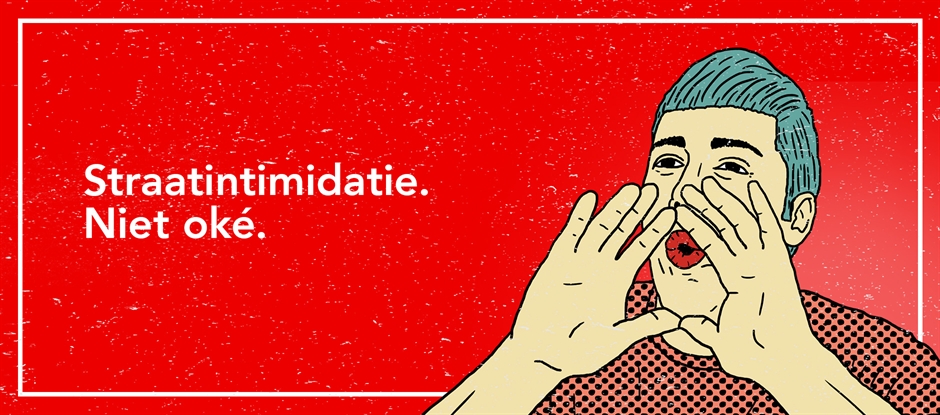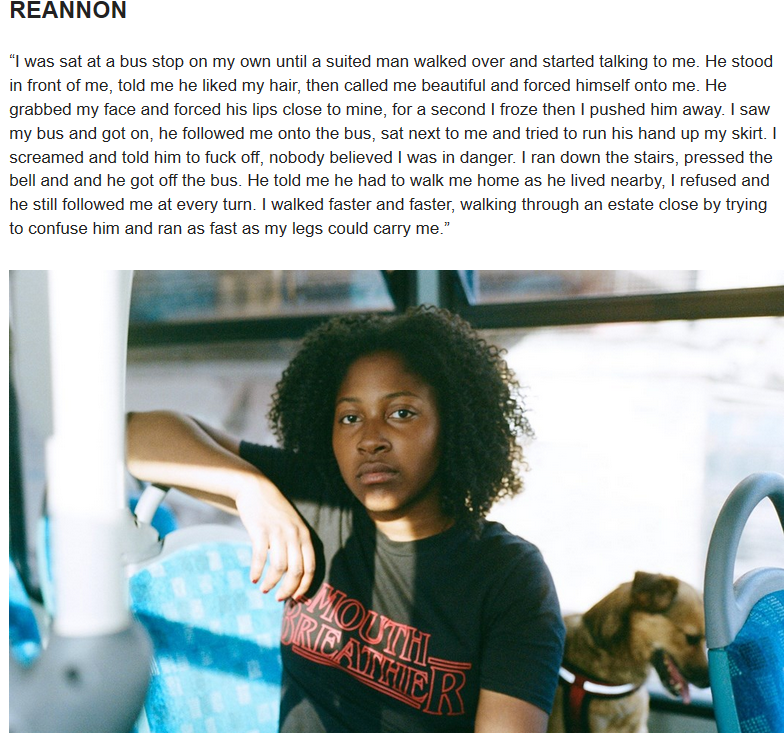Just a quick update on our national study about sexual harassment and assault… it’s on track to be released next week, on February 21st!! Stay tuned for more information.
2018 Plans for DC-Area Anti-Harassment Transit Efforts

It’s been nearly six years since we started working with Collective Action for Safe Spaces (CASS) and the Washington Metropolitan Area Transit Authority on efforts to address and prevent sexual harassment on the transit system. Today, Chantal from CASS and I attended a 2018 planning meeting at WMATA HQ and we are looking forward to various forthcoming projects:
1) Audio announcements letting people know how to report harassment they experience or witness will start being played on Metro trains this month and on buses in the spring. They asked if one of us would record them and I ended up being the one who did. So if you’re in the area, listen for my voice on Metro!!

2) During International Anti-Street Harassment Week (April 8-14), we will partner together for our annual outreach day at various Metro stations. We’ll have new flyers, bracelets, and perhaps other giveaways, so stay tuned. We’ll also be looking for volunteers to help distribute information (date TBD but likely during evening rush hour on April 10 or 11).
3) Currently the third wave of print PSAs are up on the system. They are gorgeous! But if they’re up too long, people get used to them and don’t notice them anymore. They went up in Nov 2016, so it’s about time for new ads. We will work on a new set of ads over the summer.
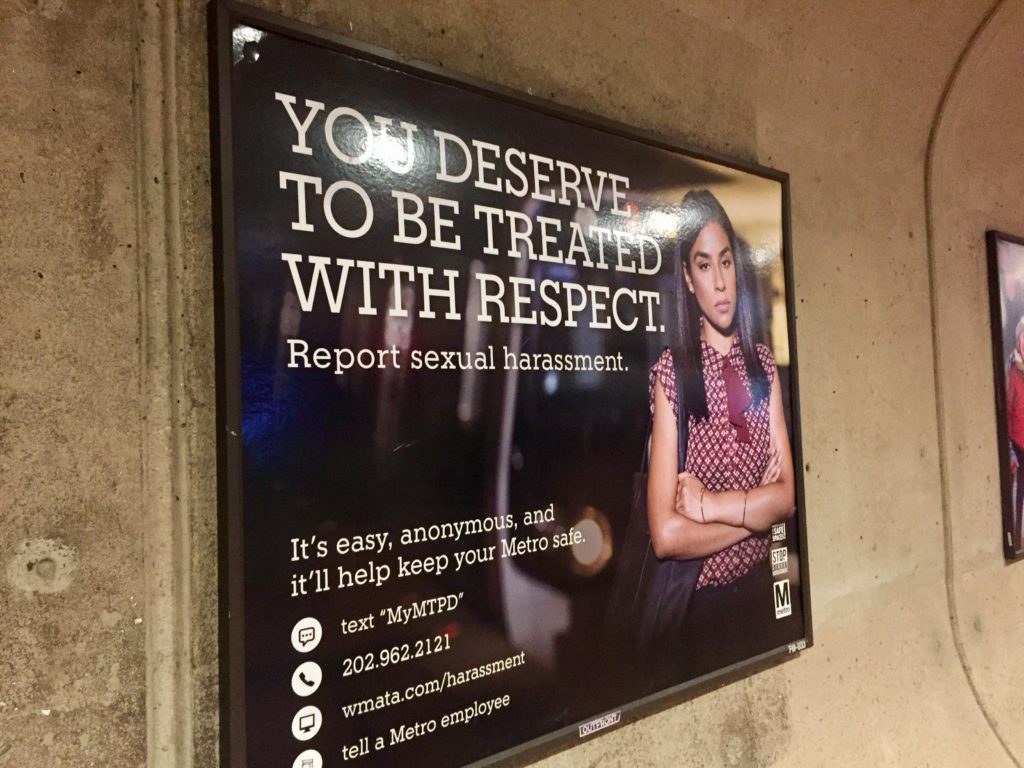
4) We began a discussion about doing a follow-up survey of some kind to the 2016 ridership survey on sexual harassment to see how the latest print ads have been received and to see if people’s experiences with harassment have changed at all.
Those were the main updates. We are grateful that WMATA continues to dedicate time and resources to making the transit system safer.
Looking Ahead to SSH Programs in 2018
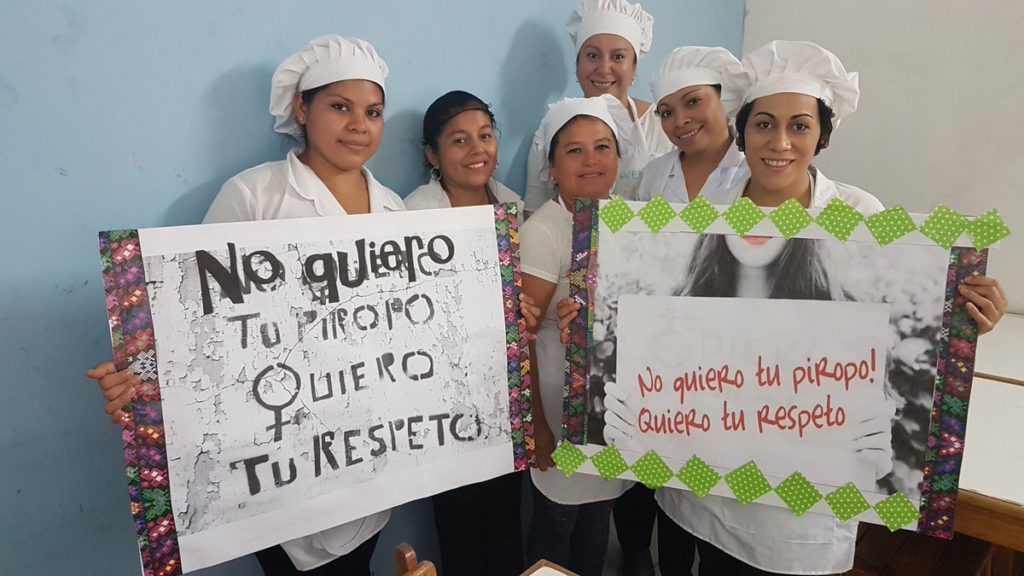
2017 was a big year, and 2018 looks like it will be even bigger!
As we look toward 2018, we already have a few projects on the horizon:
1. Blog Correspondents Program: We are looking for applicants for our first cohort of Blog Correspondents! Apply by Jan. 7!
2. National Survey: Thanks to our generous donors, PinPoint Foundation and Raliance, we are moving forward with the survey firm GfK to conduct a nationally representative survey on sexual abuse across all the spaces it occurs. The survey draft is under review by our advisory committee right now and we hope to see the 2000-person survey conducted in mid-January. Afterward, pro bono data analyst will be conducted by Dr. Anita Raj, Director of UC San Diego’s Center on Gender Equity and Health. We hope to release the timely report in March 2018!
3. International Anti-Street Harassment Week: Our 8th annual week of awareness will take place from April 8 to 14, 2018! If your group or organization would like to co-sponsor, please be in touch with StopStreetHarassment@yahoo.com. Stay tuned for more information, including a toolkit for community action that is tied to the national survey.
4. National Hotline: We will continue to partner with RAINN to offer the only national hotline dedicated to ending street harassment. It costs about $400 per month to run both the phone and online hotline. Your tax-deductible donation can help keep the hotline running!
May 2018 will mark our 10-year anniversary, so that will also make it a big year for us.
Thank you for being part of our community, and we look forward to working with you more in 2018!
New Research, Campaign & Photo Project
Research conducted by experts at the University of Melbourne in Australia demonstrates how common sexual harassment is in the lives of women and documents the possible impact this can have on how women think about themselves. The full results were published in the British Journal of Social Psychology.
Two key findings are:
1. Women reported being the target of a sexually objectifying event once every two days.
2. Both being personally targeted or witnessing others being objectified was associated with a “substantial increase” in “self-objectification”, proving that instances of sexual harassment can have a negative impact on the way women think about themselves.
____________________
In the Netherlands, Stop Straatintimidatie launched a new campaign against street harassment. Campaign founder Gaya Branderhorst shared, “The message to the public is clear: everyone should be able to walk the streets without harassment,” and “street harassment will be fined in Amsterdam and Rotterdam from 2018 onwards, and other cities are planning to follow soon.” Great!
____________________
In the UK, photojournalist Eliza Hatch created a new photo series called Cheer Up Luv to raise awareness about street harassment. An article for the Guardian states, “Hatch found her female friends had all experienced harassment regularly, while her male friends were shocked by how frequently it occurred. Her photographs often feature women in environments in which they have been harassed, alongside their accounts. ‘I really wanted to capture the woman in her surroundings,’ says Hatch. ‘Instead of it being somewhere where she felt vulnerable, I wanted to make it a stage for her to speak out from. And I wanted you to actually look into her eyes as you’re hearing her story.'”
See more at: instagram.com/cheerupluv
What’s in a Name?
Guest Post for International Anti-Street Harassment Week
By Blythe Tyrone
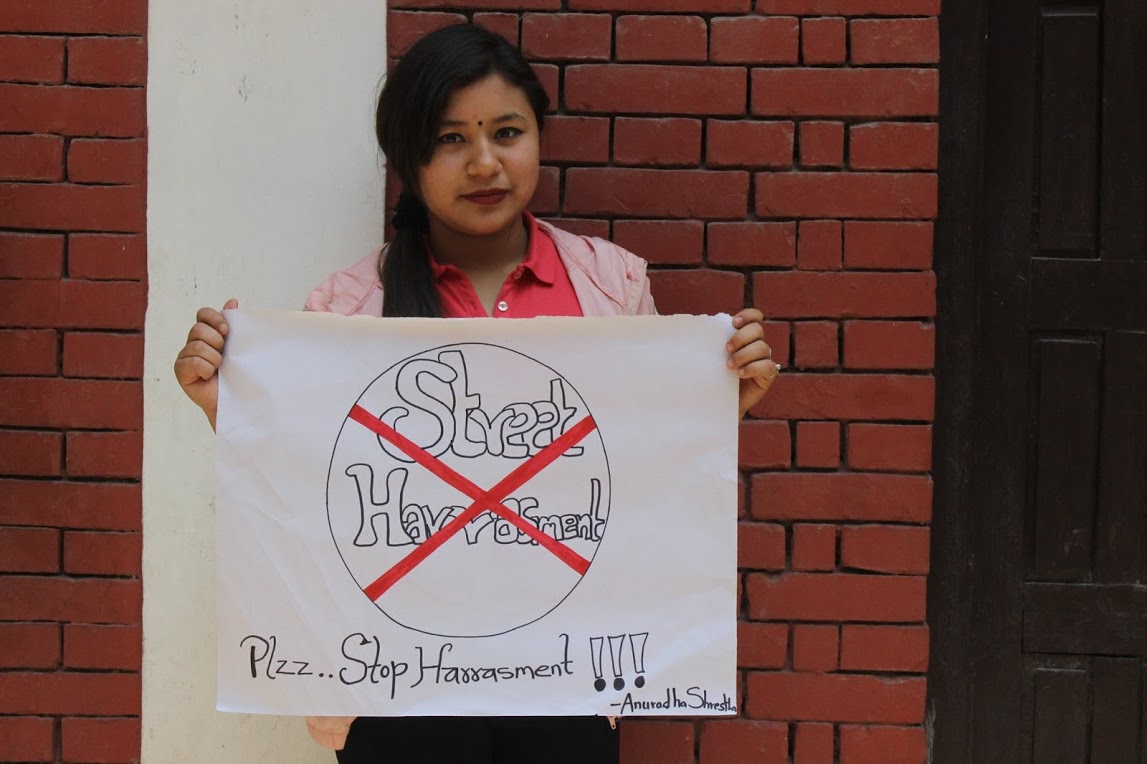
Ask any woman if she’s experienced street harassment, and she’s likely to respond emphatically in the affirmative. She’ll probably have a few anecdotes to share (she might even laugh while doing so), recounting what was said and done by whom, maybe regretting the way she handled the situation but recognizing the potential danger of an alternative response. As result of the harassment, she might share that she now avoids that one street at certain times of the day, or perhaps makes a point to listen to music while walking down a city street to discourage unwanted comments, or simply to drown them out.
To a passerby, street harassment may just seem like harmless words, but these uninvited interactions have real effects on women’s daily lives. I intentionally don’t jog on the sidewalk of high-traffic streets, for instance, because the occasional honk or holler is jarring and distracting from what should otherwise be a stress-relieving activity. It’s minor, but it’s a real change I have made in my life because of street harassment.
Because street harassment is so common, it seemed like an area that would be ripe for academic research, but when I started digging into the literature, I was surprised at how little I could find, especially compared to similar topics like sexual harassment. I thought street harassment was such an obvious problem and was surprised that no one seemed to care about it. I could find peer-reviewed research on what pick-up lines worked better at a bar, but little about something so common it’s been the subject of a viral video, comedy sketches, webcomics, think pieces, a Tumblr project, disturbing headlines, and initiatives.
The problem, I soon learned, was a simple matter of definition. What’s in a name? Well, quite a lot, apparently. Eventually I discovered that I was far from the only one interested in researching street harassment, but I was one of the few actually using that term. Street harassment research is scattered across disciplines under a variety of names such as stranger harassment (Fairchild & Rudman, 2008), public harassment (Gardner, 1995), catcalling (Wesellmann & Kelly, 2010), girl watching (Quinn, 2002), sexual terrorism (Nielson, 2002), street remarks (Kissling, 1991), and street hassling (West, 1987). So, earlier, when you asked that woman if she’s experienced street harassment? She could actually have described any one of these experiences.
Research is an important tradition that helps us understand problems and leads us to solutions. If we are not using the same words when identifying our problems, how can we expect to share what we have learned about them so that others may take our experience into consideration for their own work or build on it?
For my graduate thesis at NC State University, I have made a point to explore the many names street harassment research might be disguised under in past research. However, as more and more people – especially beyond the hallowed halls of academia – start using the term street harassment, not only might it spur researchers to start using the same name, but it may help spread awareness to the general public as well. To recognize and call out street harassment when we see it, we need to all be on the same page as to what we’re calling it to begin with. This isn’t to say that there are not many different layers that shape street harassment (it is certainly enmeshed in issues of race, power, gender, sexuality, etc.), but if we have a common place to start, we will be more unified and effective in the overall effort to stop street harassment.
Blythe Tyrone is a graduate student at NC State University studying street harassment for her thesis research. Follow her on Twitter @blythe_tyrone.

